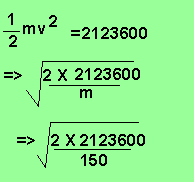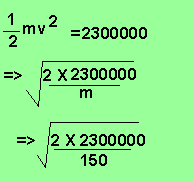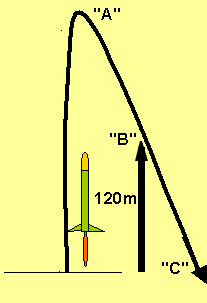Solution
The rocket at "B" has a mass of 150kg and a height of 120m. Its
kinetic energy is the difference between the potential energy at "A"
minus the potential energy at "B" and can be calculated according
to the expression below
2,300,000 - 150
X 9.8 X 120 =2,123,600 joules

v = 168.27m/s
Click to hide the solution

